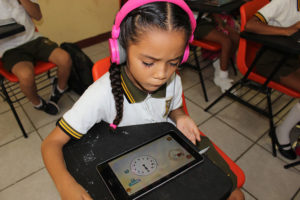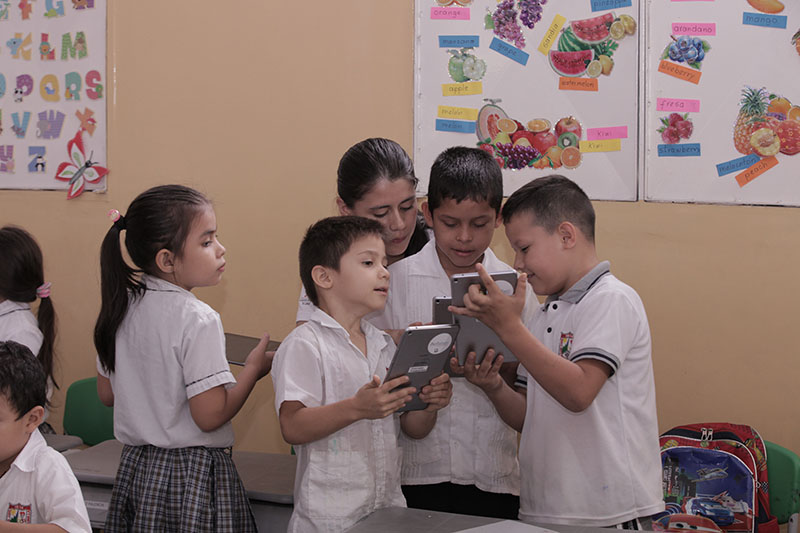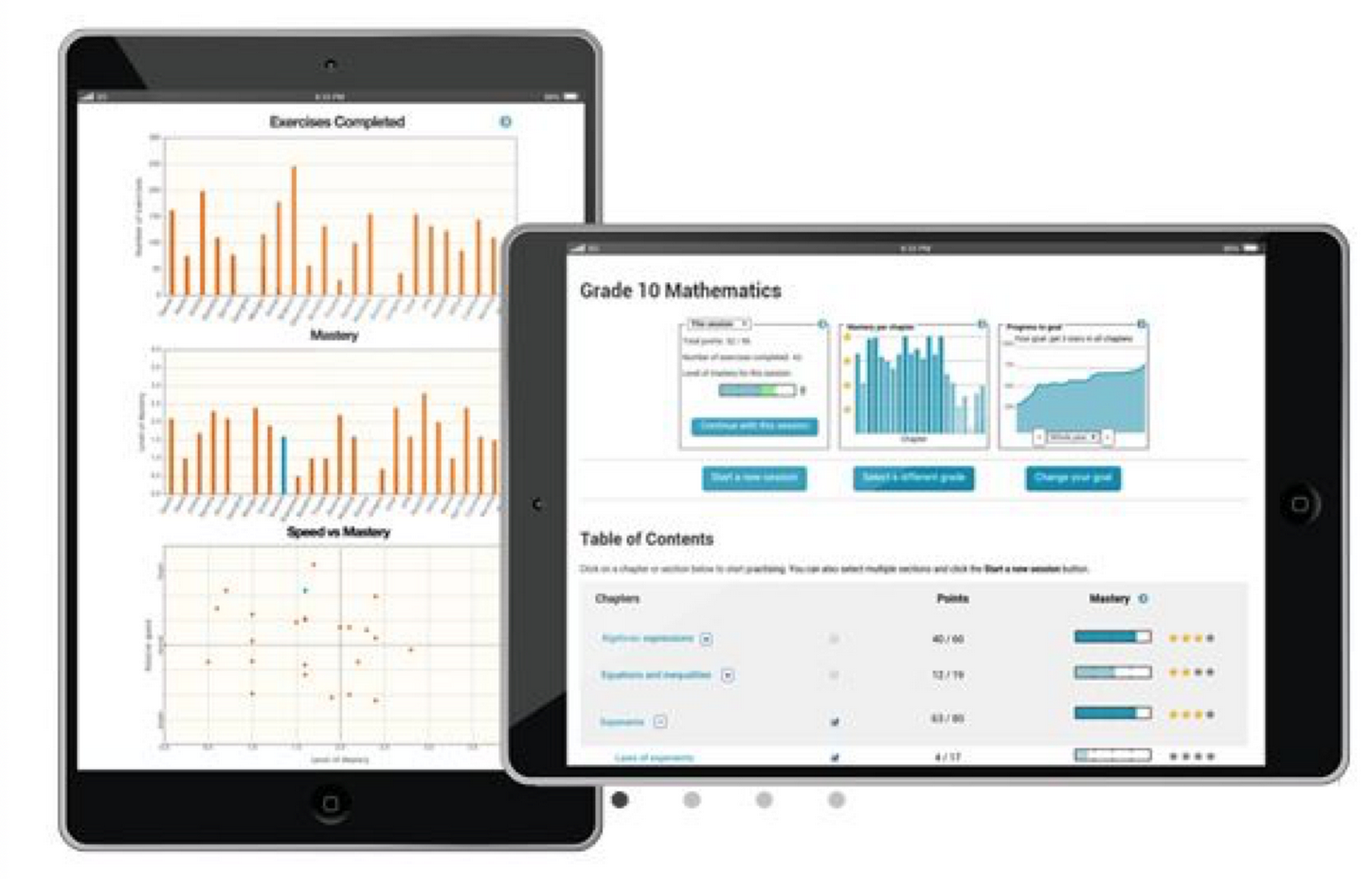Learning poverty, school absenteeism, resource shortages, millions of out-of-school children… Vulnerable countries face a host of educational challenges that, while long-standing, were intensified by the learning crisis caused by the COVID-19 pandemic. However, in return, the pandemic accelerated the incorporation of technology into education. This incorporation, which until recently had been incipient, isolated and disparate, has now become an imperative that has put all school systems to the test.
With a few exceptions, technology’s entry into education has been improvised. Countries responded as best they could to the education emergency without evidence-based action plans on what worked and what did not. The priority was continuity of learning so that millions of children around the world would not suffer the consequences of an education gap with irreparable consequences for their future.
In recent years, there has been a growing number of studies documenting the effectiveness of different digital education solutions in improving learning outcomes.
Today, with the health crisis a little further over the horizon, it is time to take stock. To see what is working and what is not working in digital education. This stocktaking is essential to help policy makers do their job and plan effective public policies that take the impromptu momentum of the pandemic and turn it into a collective, structured effort capable of transforming education.
In recent years, there has been a growing number of studies documenting the effectiveness of different digital education solutions in improving learning outcomes. Can technology help universalise education or will it further widen learning gaps? What kind of education is most effective? Which solutions work best? In this article we will summarise the conclusions reached by the evidence on digital education. We will do this with the help of UNICEF which has published a document compiling the results of 53 academic publications on different aspects of digital education.
The key to success: tailor-made programmes in each context

We know that simply expanding access to digital devices (e.g. provision of computers or tablets) does not have a positive impact on learning outcomes (Educational Technology in developing countries: a systematic review and Will technology transform education for the better?). However, the application of digital learning solutions has shown great promise for improving learning outcomes when they are carefully designed with the specific characteristics of the context in which they are to be implemented in mind (rather than applying a standard solution) and when they are innovatively integrated into teaching and learning processes to augment other learning-oriented interventions (Effectiveness of interactive satellite-transmitted instruction: experimental evidence from Ghanaian primary schools).
The greatest impact is achieved by complementing and enhancing existing practices with technology
Digital learning solutions designed to enhance teacher instruction tend to be the most effective in improving learning outcomes (Educational technology in developing countries: A systematic review), especially when they are designed to complement – and not replace – best teaching practices (Intellectual, social, and moral development: Why technology cannot replace teachers).
Well-designed digital learning solutions often facilitate a feedback mechanism between the teacher and the learner which, in turn, allows the teacher to assess the learning needs of the students, customise educational materials as needed (for personalised instruction) (Personalised learning: the conversations we’re not having) and increase interaction time between students and teachers to focus more on problem solving. It also allows the teacher to gauge students’ understanding and to adjust the pace of instruction to this level of understanding (The effects of a digital formative assessment tool on mathematics achievement and student motivation: results of a randomized experiment and Remedying education: Evidence from two randomised experiments in India).
Hybrid education improves learning

As mentioned above, the digital programmes that have the greatest impact on learning are those that enhance and improve existing teaching practices. Therefore, according to the results of many studies, combining online learning with face-to-face teaching tends to produce better results than face-to-face or online learning on its own (The impact of blended and traditional instruction in students’ performance and The effect of blended learning in Mathematics course). This is due, in part, to the potential of digital education to overcome the limitations of traditional classrooms, such as a wide range of student learning levels, minimal interaction between students and teachers, and large class sizes (Will technology transform education for the better?).
Thus, evidence indicates that digital learning solutions that support self-directed learning in a flipped classroom or other blended learning models have been effective in improving student performance (Adoption of flipped classrooms in K-12 education in developing countries: challenges and obstacles, Investigating self-directed learning and technology readiness in blending learning environment, An investigation of the construct validity of the personality trait of self-directed learning and Relationships between access to mobile devices, student self-directed learning, and achievement).
Digital education increases student motivation to learn

Evidence also shows that digital learning solutions engage students emotionally: students’ attitude, enjoyment and interest in learning increase (Using technology in education from pre-service science and mathematics teachers’ perspectives). Digital learning solutions appeal to students from a behavioural point of view, as they can motivate them to devote more effort and time to learning activities (One-to-One technology and its effects on student academic achievement and motivation).
In addition, digital learning solutions combined with innovative teaching methodologies such as collaborative learning, project-based learning or other joint activities have been shown to develop synergy, high-level thinking and improve self-motivated and directed learning skills (Technology in support of collaborative learning, Computer-based technology and student engagement: a critical review of the literature, Empowering student learning through Tablet PCs: A case of study and Laptop initiative: impact on instructional technology integration and student learning.
Digital education facilitates the acquisition of basic skills
In terms of its role to facilitate the acquisition of numeracy and literacy digital learning solutions have also shown great promise not only in supporting students’ efforts to understand content and improve mathematical competences (Information technology and student achievement: evidence from randomized experiment in Ecuador, The effects of a digital formative assessment tool on mathematics achievement and student motivation: Results of a randomized experiment and The impact of technology-enhanced curriculum on learning advanced algebra in US high school classrooms), but also to improve reading skills. Some studies argue that the increased provision of literacy materials and books through educational applications, search engines, videos, portable technologies and interactive activities provides students with a 24/7 learning environment that can contribute to improved reading (The effectiveness of education technology for enhancing reading achievement: a meta-analysis).
This improvement has also been detected in evaluations carried out by ProFuturo in Ecuador, where a study showed a direct relationship between children’s interest in reading and writing and the use of the tablet provided by the programme, and in Guatemala, where the findings indicate an improvement in digital skills in reading, arithmetic and even self-learning.
Assistive technology and inclusive learning
Studies have shown that assistive technology (an umbrella term for all equipment, tools and devices used to increase, maintain or improve the quality of life and autonomy of persons with disabilities) can not only make learning more accessible to learners with disabilities (Assistive technology in developing countries: national and international responsibilities to implement the Convention on the Rights of Persons with Disabilities), but also improve their performance.
Thus, studies have demonstrated the positive effect of assistive technology in improving the reading skills of dyslexic students (Using computer-based readers to improve Reading comprehension of students with dyslexia), improving the mathematical skills of hearing impaired people (E-learning modules of tutorial lessons for the deaf students: development & evaluation “viewpoints of experts in consideration”, Improving mathematics teaching and learning experiences for hard of hearing students with wireless technology-enhanced classrooms) and the visually impaired (Digital learning in mathematics for students with severe visual impairment: a systematic review).
Studies, research and evidence on educational technology (such as those listed here) increase the effectiveness and efficiency of education systems and help us to scale and replicate best practices in a sustainable and universally applicable way in those countries and contexts that need it most.
REFERENCES
UNICEF. 2022. Effectiveness of digital learning solutions to improve educational outcomes. A review of the evidence.






